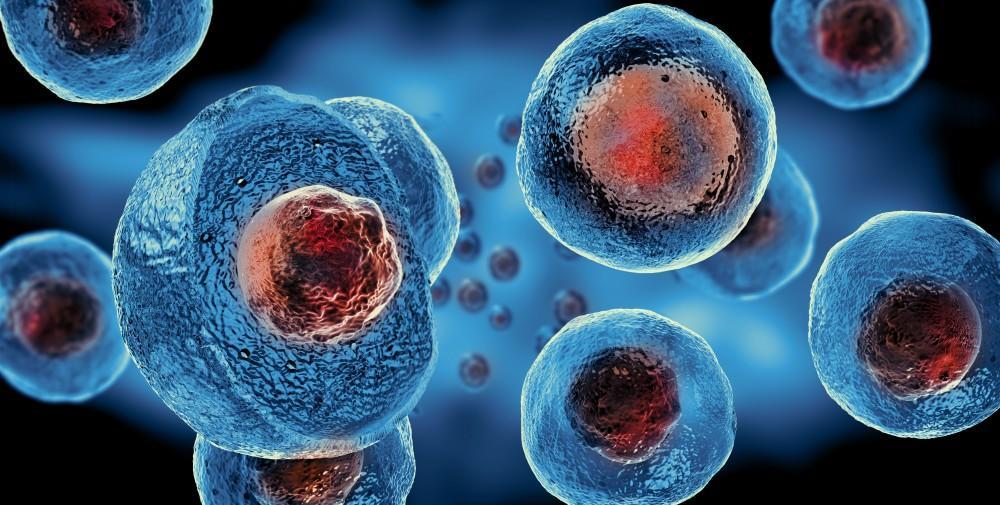
Maryland’s Rich History of Regenerative Medicine
The regenerative medicine flowering within Maryland is creating new-found comfort for the BioHealth region. Through the assistance of the accelerator Launchport, many emerging companies are contributing seemingly futuristic technologies in the most modern and applicable of ways.
Cora Karim | October 30, 2024
| BioBuzz has been connecting the life science workforce since 2009. We’ve built an expansive community in the Mid-Atlantic with a national readership that spans from Massachusettes to Florida, and New York to California. For our next chapter, we’re building a proprietary talent logistics model to help employers source and hire life science talent. Learn more. |
Maryland is home to one of the first concentrated autologous mesenchymal stem cell (MSC) products for regenerative bone growth named Osteocel, developed by Osiris Technologies. The company was later sold to Smith & Nephew – who still operate out of Columbia, MD, today – and Osteocel became a prime candidate for reproduction into more commercialized venues. This is just one success story of Maryland’s innovation in regenerative medicine. Regardless of the proprietor, products like Osteocel continue to flourish from Maryland, and many of these business blooms are transpired by accelerators such as Launchport located in Baltimore’s Port Covington.
“The region’s rich history in stem cell and regenerative technologies is converging with our considerable strengths in advanced medical device manufacturing, neurotechnology, and artificial intelligence, giving rise to a new generation of companies built on these foundations. Advances in therapeutic ultrasound and neurostimulation, along with sophisticated substrates for delivering treatments in revascularization, nerve regeneration, and targeted angiogenesis or osteogenesis, are driving progress across orthopedics, neurology, ophthalmology, and cardiovascular restoration. This ecosystem includes a strong base of local companies, along with a growing influx of early-stage firms attracted to the region’s unique capabilities.” – Robert “Bob” Storey, Managing Partner at LaunchPort, LLC
Emerging Companies Against Bone Attrition
Everyone has bones and needs to keep them unless you are a jellyfish. With the ongoing advancements in regenerative medicine, human limitation seems to have gone beyond its threshold; one of the companies contributing to such changes is Theradaptive, founded by Luis M. Alvarez, who developed the concept for a targeted regeneration platform. His team uses an innovative protein-engineering technology that transforms proteins into material-binding variants. Many of their finished products are used as necessary support tools, such as detachable limbs for combat veterans or material-binding proteins for use in coating implants, devices, and injectable carriers.
“Theradaptive is proud to be part of Maryland’s regenerative medicine landscape, driving innovation from our base in Frederick. As a clinical-stage biologics company, we’re developing precision protein therapeutics for the spine, orthopedics, soft tissue repair, and targeted immuno-oncology, aiming to address critical, unmet medical needs. Our therapeutic delivery platform, including our investigational device-biologic combination product OsteoAdapt™ SP, is designed to deliver recombinant biologics directly to targeted areas of the body with unprecedented precision and durability.” – Luis Alvares, PhD, Founder & CEO
It’s also important to point out that their location is a major factor in their success. Maryland is a part of the BioHealth Capital Region, contributing to a majority of the medical advancements in our country. Just last year, Theradaptive received funding from the Maryland Stem Cell Research Fund (MSCRF), enabling Theradaptive to establish its state-of-the-art GMP Manufacturing facility in Frederick. The fund’s administration by the Maryland Technology Development Corporation (TEDCO) further shows the litany of the state’s involvement in creating a successful medical region. These are just a few examples of the integrations Theradaptive has made, and the supplemental companies contributing to such advancements continue – and they’re all in Maryland.
It’s Like We’re In A Video Game
While our modernist society may not have – that we know of – access to enhanced neuro-links, limbic cybernetic enhancements, protein syntheses, and compounds rewinding atrophy and completely restructuring degenerated cells and tissue as if no wound or aging had ever happened, we may actually be at the starting point of an impending futuristic cyber-evolved society.
Along with Theradaptive’s innovation, there are companies under the Launchport accelerator’s umbrella working in picturesque regenerative medicine that almost seem to be out of a video game: Medcura’s wound care for spine surgery, utilizing their breakthrough biopolymer technologies that are redefining homeostasis, all while maintaining relatively universal affordability to providers and payers; Sonogen and their development in next-gen ultrasonic bone fracture healing technology; the novel therapy treatments for anomalous cancer progression patients at NextCure; CurveAssure’s wearable and digital technologies providing comprehensive spinal insights to clinicians; Longeviti’s ClearFit customized implants which are patient-specific, implantable prosthetic cranioplasty plates “intended to correct and restore bony voids and defects of the cranium”. Longeviti’s implants also allow for postoperative imaging using ultrasound, adding to its multiplicity of convenience, comfortability, and life sustainability.
I promise you: this innovation isn’t something from Dune or Cyberpunk 2077 – it’s happening in our very age, in this modern time, and in Crab State’s very own Baltimore.
Future Forward
As Charles Darwin noted, “The love for all living creatures is the most noble attribute of man”.
While his gendered nomenclature may be a bit rusty, the sentiment remains nonetheless. Take, for example, Djit Medtech’s Marcia Hart, co-founder at Lifejoint, a Harvard and Princeton graduate committing her entire life to invention in the company’s small joint replacement technology for those suffering from arthritis. She and Dr. Ryan Katz, M.D., developed the tech due to having personal experience or inclusion within the field.
As someone who has undergone a non-intrusive hand surgery due to a VERY silly skiff with an immovable object and unstoppable force years ago and, unfortunately, developed my product of acute arthritis, it brings me great joy knowing people are dedicating their lives to creating products of comfort and the nullification of pain.
The regenerative medicine coming out of Maryland shows how much the state cares about its community, and the technology translates outside of the region, too, to benefit any and all who require it.







